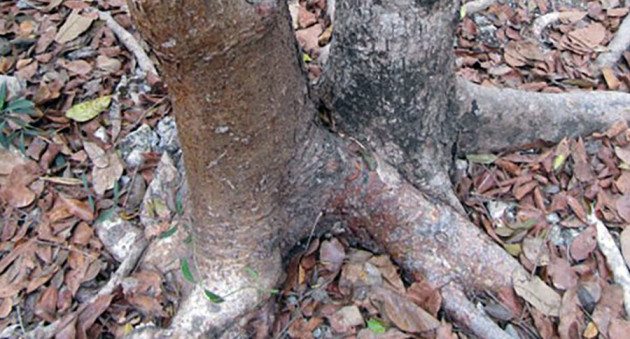The rainforests and jungles of Central America are as unique of a place to explore as any other. A wide variety of animals, reptiles, birds, and vegetation all call the area home. A habitat like the one present the tropical jungles of Central America can offer life forms both of beauty and beast. In certain parts of these jungles, however, the vegetation can be as much a concern as the wildlife.
Videos by Rare
In parts of Central America and Mexico, there are 11 known varieties of trees and shrubs that are poisonous to the touch. These poisons can cause severe discomfort including itching, painful rash, and other unfortunate reactions.
For one of these trees however, the metopium brownei tree, known more popularly as the Chechem tree, one doesn’t have to look far for an anecdote. The Chechem tree, which extrudes a poisonous black sap, contains high amounts of urushiol, an oil-like substance that is the same active chemical agent in poison ivy. Have no fear, though. The anecdote for the poison comes by way of another tree which happens to grow right next to the Chechem, often so close that the root systems will intertwine with one-another.

The blistering rash-like reaction of the skin caused by the poison can be immediately treated by rubbing the area with the leaves or bark of the bursera simaruba tree. Parts of this tree, known more commonly as the Chaka or Gumbo-Limbo tree, offer chemical compounds that quickly neutralize the poison from the Chechem tree allowing the human body’s uncomfortable reaction to stop. The compounds in the Chaka tree leaves and bark also act as an anti-inflammatory and can assist in the reduction of itching and swelling.
While it is not completely uncommon for nature to find a way to provide natural remedies to issues caused by one plant or tree in the form of another, the close proximity of these trees is unique. Many who study the jungles of Central America believe the close proximity may be due to birds who feed on flowers and fruit of both trees. This feeding behavior causes the seeds of one tree to fall directly below or beside its counterpart.
Like what you see here? Click here to read more great hunting, outdoor, and shooting articles by Reid Vander Veen. Follow him on Twitter @ReidVanderVeen and on Instagram.
NEXT: SCOUT OVERLAND KITCHEN: THE ULTIMATE ACCESSORY FOR HUNT CAMP



